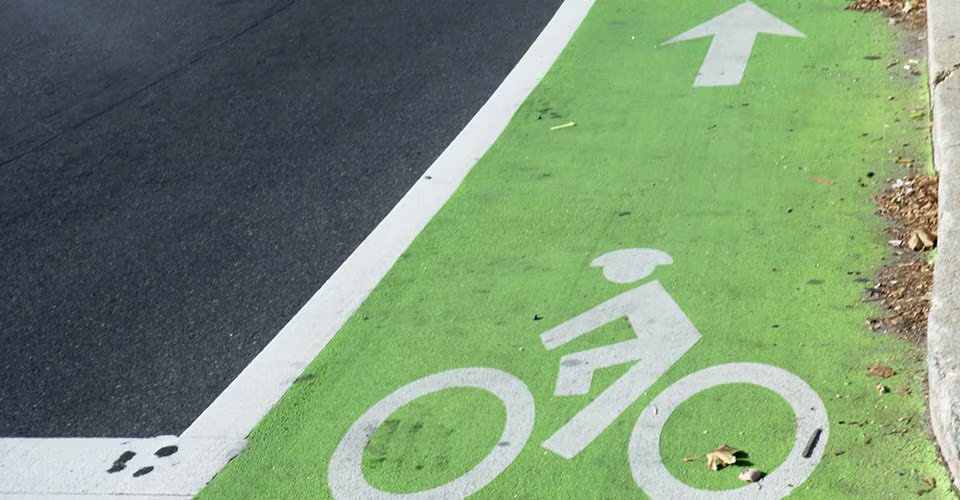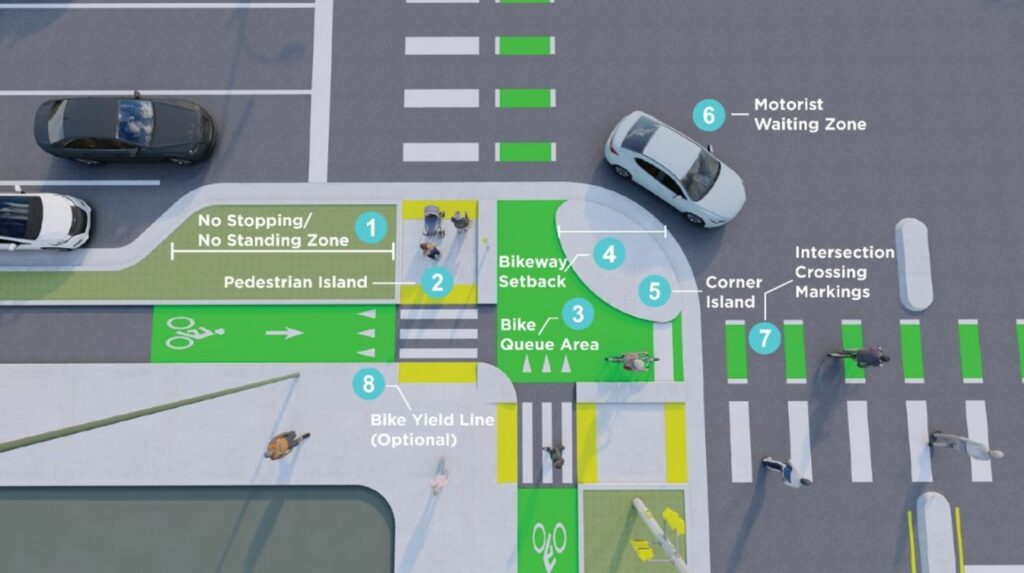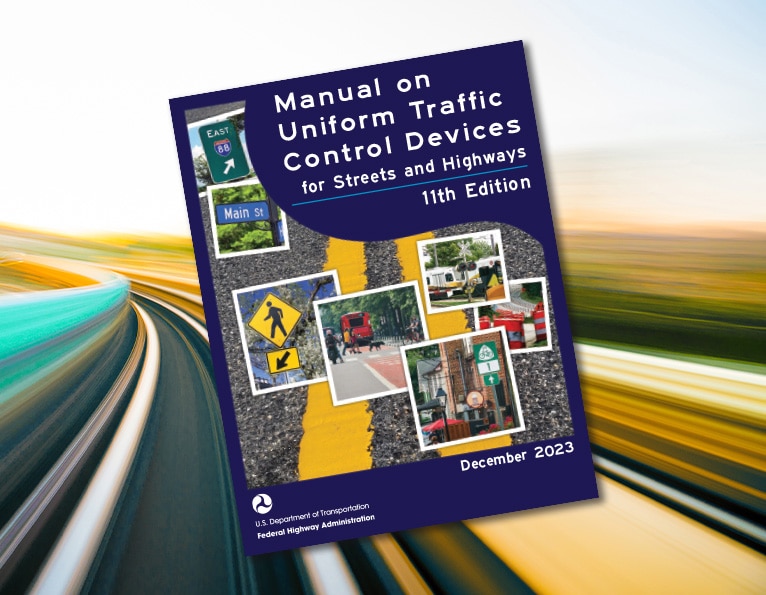The look and feel of our streets isn’t arbitrary. Every sign, pavement marking, and signal is governed by an arcane set of federal guidance called the Manual on Uniform Traffic Control Devices (MUTCD). Last year, the MUTCD got a much-needed overhaul and states like Virginia now have until January 2026 (end of a 2-year window) to adopt the updated federal guidelines or develop their own substantially similar version.
Below we explain what the MUTCD is, how it’s changing, and the role advocates can play in the upcoming adoption process.
What is the MUTCD?
The Manual on Uniform Traffic Control Devices or MUTCD is a federally-developed guidance document that sets the national standard for all traffic control devices – signage, signals, pavement markings, and barriers – installed on any street, road, highway, or bikeway open to public travel. The idea is that wherever you travel in the United States, the roads and signs you encounter should be similar.
Transportation planners can mix-and-match and have some leeway but, for the most part, are limited to using what is in the MUTCD ‘tool box’. It’s the reason why, for example, Fairfax County doesn’t build protected intersections: federal guidance, and by extension state guidance, doesn’t currently contemplate or allow them. Until now!

What’s changing?
The 11th Edition of the MUTCD was adopted in December 2023 – the first major update since 2009 and the first version in which the general public had the opportunity to weigh in. This edition’s stated purpose of promoting safety, inclusion, and mobility of all road users is a noted and welcome change that recognizes that roads must cater to multiple modes of transport. One of the most significant alterations is the elimination of the 85th-percentile rule for setting speed limits, a long-criticized policy that essentially lets drivers dictate what speed is ‘reasonable’ and has exacerbated our traffic violence epidemic.
The 11th Edition also codifies numerous bicycle- and pedestrian-related traffic control devices and design options that have emerged since 2009 as particularly safe and effective treatments. These include treatments – like green-painted bike lanes – that previously had ‘Interim Approval’ and were utilized in some but not all localities; now, they can (hopefully!) be implemented on a much wider scale. Other now-authorized ‘tools’ in the MUTCD toolbox include:
- Protected bicycle lanes and intersections (separated by physical barriers);
- Dedicated bicycle signal faces and bicycle-specific traffic signal timing;
- Painted bike boxes (advanced stop lines for bicyclists at intersections);
- Contraflow bicycle lanes (enabling two-way bicycling on one-way streets); and
- Mid-block crossings and pedestrian hybrid beacons with bicycle accommodations.
While the new MUTCD alone doesn’t guarantee safe streets, it can help support safer outcomes if the new (and existing) tools are properly implemented with vulnerable road users top of mind. To aid in implementation, states and localities must also look to resources like the American Association of State Highway and Transportation Officials (AASHTO) Bike Guide, now in its 5th Edition, that establish comprehensive best practices for the planning, design, and operation of bikeways along streets, roads, and highways, as well as on off-street paths in urban, suburban, and rural settings.

What happens now?
States that have their own MUTCDs or state supplements to the federal MUTCD are now required to bring their guidance into ‘substantial conformance’ with the new federal edition by January 2026. The Virginia Department of Transportation (VDOT) began the adoption process this January and is expected to present a draft for public comment this spring.
What can you do?
VDOT is currently accepting comments through Friday, February 21st on the method of adoption – i.e. whether Virginia adopts the MUTCD as-is, adopts the MUTCD with a state-specific supplement, or develops a state MUTCD incorporating the national standards. This is largely a formality as VDOT is almost guaranteed to adopt a state-specific supplement as it has done with previous editions.
The real opportunity to engage will happen later, once a draft supplement is released. We’ll be particularly focused on how and where VDOT proposes to allow (or not allow) particular bicycle-related treatments…and we’ll want you to weigh in, too!
That being said, if this post has gotten you riled up about arcane road sign guidance, we invite you to chime in now! Tell VDOT you’re excited about the adoption process, that you support the incorporation of all the numerous new bicycle- and safety-focused devices and treatments, and that VDOT should allow implementation of such treatments in the broadest possible manner.
